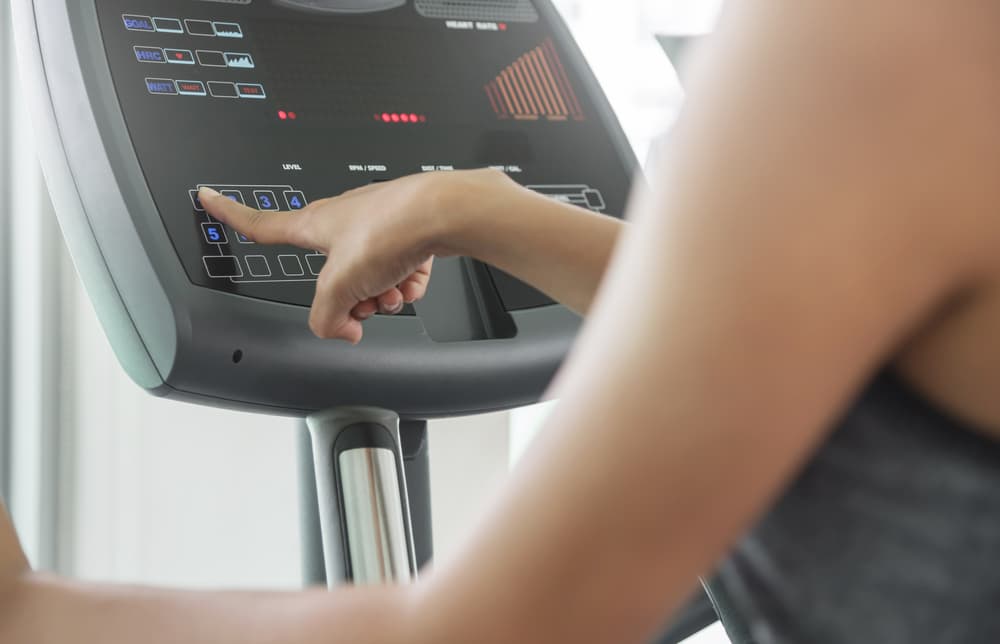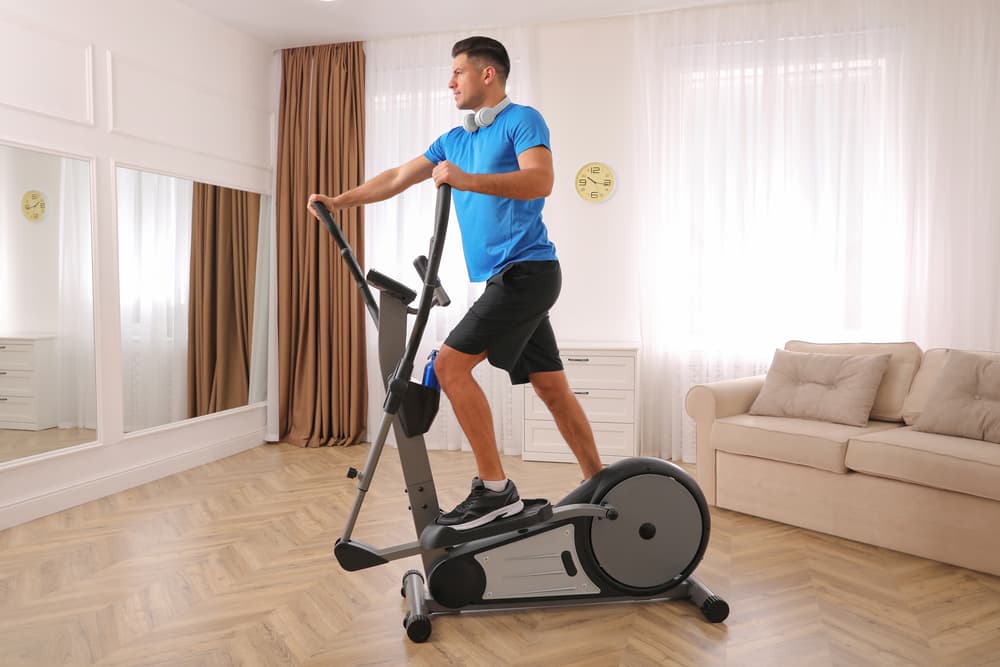If you’ve ever wondered how to use elliptical trainer equipment the right way, it all comes down to good form.
To use an elliptical with proper technique, start by standing tall with your shoulders relaxed. Next, keep a light grip on the handlebars (at or below shoulder height), engage your core, and keep your feet flat on the pedals. Then, push through your heels to move forward and use your hamstrings to pull back, keeping your knees slightly bent.
Proper form matters because it boosts elliptical benefits, prevents pain, and makes your workout more comfortable. Let’s discuss the steps and tips you need to know.

Getting Started on the Elliptical
Before you jump into your workout, it’s important to ease into the elliptical the right way. Starting safely and warming up properly will help you avoid injuries and make your session more effective.
Here’s how to do it.
1. Mount the Machine Safely
- Step onto the elliptical while facing the console.
- Hold the stationary handlebars to steady yourself.
- Place your feet flat and secure on the pedals.
2. Start Pedaling Slowly
- Begin at a low resistance and gentle pace.
- Take a few easy strides to get used to the movement.
- If your machine needs it, press “Start” or power on the console.
3. Warm Up Properly
- Pedal lightly for 5 to 10 minutes at low resistance.
- This step gets your blood flowing and warms up your muscles.
By taking these simple steps, you’ll not only feel more comfortable but also give your body the prep it needs for a safe and effective workout. Remember, a good start sets the tone for the rest of your time on the elliptical.

Observing the Proper Form During Elliptical Workouts
Form matters as much as effort when you’re on the elliptical. Using the right posture and foot placement will keep your workouts safe, comfortable, and effective. Here’s what to focus on:
1. Upper Body and Core
- Stand tall: Keep your head up, shoulders back, and chest open. Avoid slumping or leaning forward.
- Engage your core: Tighten your midsection to stay stable and prevent swaying.
- Relax your grip: Hold handlebars lightly. If it feels better, let go and swing your arms naturally.
- Check alignment: Keep elbows slightly bent, with grips at or below shoulder height.
- Use moving handlebars (optional): Push and pull in rhythm with your legs for a full-body workout, or hold the stationary bars to focus more on your lower body.
2. Lower Body and Foot Placement
- Keep feet flat: Place them fully inside the pedals and distribute weight evenly from heel to toe.
- Drive through your heels: This activates your hamstrings and glutes.
- Keep knees soft: Maintain a slight bend and avoid locking out.
- Align knees and toes: Point forward for smooth, joint-friendly motion.
- Mix it up: Occasionally pedal backward to challenge new muscles.
By doing these proper form tips, every stride feels natural, safe, and more rewarding.

Advanced Techniques and Avoiding Errors
Once you’ve mastered the basics, you can make your elliptical workouts more exciting and effective by mixing things up. Adding variety keeps your body challenged while avoiding mistakes ensures you stay safe.
1. Add Variety and Intensity
- Reverse pedaling: Target your hamstrings and calves in a new way.
- Interval training: Alternate speed, resistance, and incline to burn fat and build endurance.
- Switch directions: Go forward and backward to work different muscles.
- Adjust intensity: Change speed and resistance to prevent plateaus.
- Core challenge: Try letting go of the handlebars to engage your abs.
- Listen to your body: If you feel tension in your neck or shoulders, relax your grip.
2. Common Mistakes to Avoid
- Leaning too much on the handlebars.
- Bouncing or letting the pedals move you with momentum.
- Taking overly long strides. Stick with the machine’s natural motion.
3. Cooling Down
- Gradually slow your pace and resistance for about 5 minutes.
- Stretch your hamstrings, calves, and quads to reduce stiffness.
By pushing smart and steering clear of errors, you’ll get stronger, burn more calories, and finish each elliptical workout feeling good!
Master Your Elliptical Workout Today
Using an elliptical the right way is all about posture, balance, and steady movement.
Stand tall, engage your core, keep your feet flat, and use a light grip on the handlebars. Mix up your workouts with resistance, direction changes, and intervals. However, avoid leaning or bouncing so you stay safe and comfortable.
A little attention to form makes every stride more effective and enjoyable. Ready to put your knowledge into action?
Check our list of the best ellipticals in Australia to get started.

Related Questions
1. How long should I use the elliptical for a good workout?
If you’re just starting, aim for 15 to 20 minutes and gradually build up to 30 to 45 minutes, depending on your fitness goals. For a sample routine, check out this 20-minute elliptical workout guide.
2. Does the elliptical burn belly fat?
Elliptical workouts can burn belly fat, but not directly. The elliptical helps you burn overall body fat by boosting your heart rate and calorie burn. When combined with a balanced diet and strength training, it can support belly fat loss. Learn more in this article: Does the Elliptical Slim Your Waist?
- How to Use an Elliptical Trainer with Proper Form - 25 September 2025
